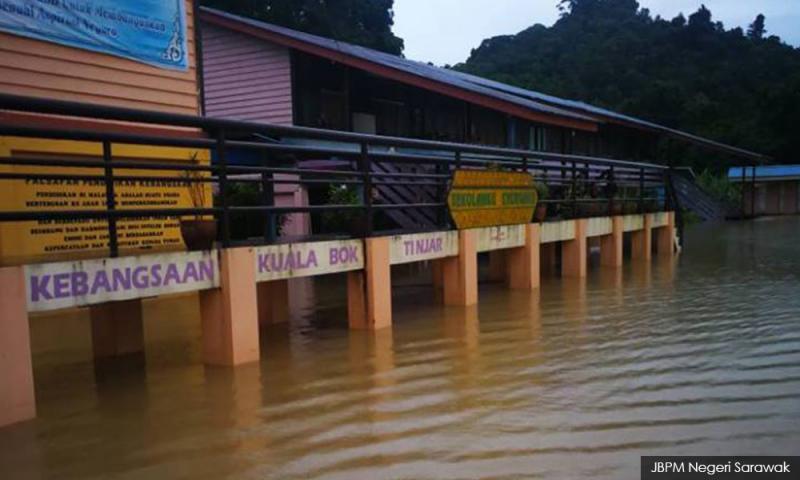LETTER | Need for urgent attention on Sarawak forest conversions, flooding incidence
LETTER | In conjunction with the World Environment Day 2020 with its theme ‘Biodiversity’, Sahabat Alam Malaysia (SAM) wishes to draw urgent attention to the serious consequences of the destruction of forests and rivers in Sarawak on human health and well-being. This is all the more critical when the impacts of climate change are upon us.
SAM is most concerned that not enough attention has been given to the issue of the increasing incidence of floods in many parts of the state, in a frequency that has not been seen before. We strongly believe that this has been exacerbated by deforestation and forest degradation for over four decades. This has caused much hardship to local and indigenous communities in several affected areas, and it will only get worse if no remedial actions are taken, primarily by protecting the forests and biodiversity and in rehabilitating degraded areas.
Sarawak was once blessed with pristine rainforests with one of the highest levels of biodiversity in the world. At least 25 indigenous tribes, comprising more than half of the 3 million population of the state, are economically, culturally and spiritually dependent on them.
However, beginning from the 1980s, Sarawak’s forests began to be logged excessively, attracting widespread international condemnation, especially for its impacts on indigenous communities. Predictably, from the 1990s onwards, as forecast by many scientific reports even back then, timber production in Sarawak began to decline. Subsequently, by the mid-1990s, monoculture plantation permits began to be issued over such logged over forests, including those within production forest reserves, largely for the cultivation of pulp and paper trees and oil palm.
Today, there are more than 3 million hectares of such land in Sarawak, some held by the same business groups that only four decades ago were over-logging its forests. From then onwards, an even more difficult period began for the Sarawak indigenous communities. While logging produces devastating ecological impacts, these monoculture plantations require total forest clearing.
Coinciding with this development, since 2011, data on historical flooding events as reported by the Department of Irrigation and Drainage (DID) in Sarawak, began to report on an increasingly higher number of flooding incidence annually in the state, from Baram, Limbang, Lawas, Trusan to the more southern regions of the state.
For example, in Baram, between the year 2001 and 2010, the DID data show that the rural township of Marudi and its surrounding villages had experienced flooding only thrice, in November 2007, October 2008 and November 2010. However, between 2011 and 2020, parts of the area experienced flooding in January 2011, November 2012, from late December 2013 until early January 2014, in January and November 2015, January 2017 and in February and April 2018. In December 2019, the town centre itself was flooded for almost an entire week, not to mention the surrounding indigenous settlements, few of which were once again threatened by inundation in January this year.
Worse, villages such as Long Bemang in Tinjar, an upstream tributary of Baram, have had to contend with several flooding events annually. The DID data show that in 2017 alone, Long Bemang and its surrounding areas were flooded thrice while the Fire and Rescue Department in Marudi reported seven incidents. This year, Long Bemang and its neighbours were reportedly flooded in March, April and May. Its neighbouring villages such as Long Panai, Long Wat and Long Atip were also heavily hit during this Movement Control Order period. The floods also inundated the communities’ agricultural areas, destroying their rice, vegetables and even seedlings of cash crops like oil palm.
Therefore, in conjunction with the World Environment Day, we urge the federal and Sarawak state governments to take cognisance of this new reality in Sarawak.
With the advent of climate change, the future rainfall patterns in Sarawak may well intensify. As such, the failure to halt further conversions of the remaining forests into monoculture plantations in the state may bode dangerous consequences to its population, especially those in the interior.
In rural Sarawak, transportation, education and healthcare infrastructure are already in poor conditions. Many of its indigenous communities have already had to contend with the loss of their food, income, traditional medicine and clean water sources when their farms and forests were first degraded by logging, and then lost to plantations.
Now more than ever, it has become highly critical for us to protect the remaining forests and rivers in Sarawak from further exploitation. Immediate rehabilitation and restoration of degraded forests areas are also vital.
Also fundamental is the need on the part of the state to respect and recognise the rights of indigenous peoples to their territories and the importance of their knowledge systems in helping to protect the remaining forests and biodiversity, which will also help them in mitigating and adapting to the impacts of climate change, as well as build their resilience to weather them.
It is imperative that the federal and statement governments give urgent attention to the link between deforestation and the worsening incidence of flooding in the state.
Meenakshi Raman is the president of Sahabat Alam Malaysia.
The views expressed here are those of the author/contributor and do not necessarily represent the views of Malaysiakini.
RM12.50 / month
- Unlimited access to award-winning journalism
- Comment and share your opinions on all our articles
- Gift interesting stories to your friends
- Tax deductable
